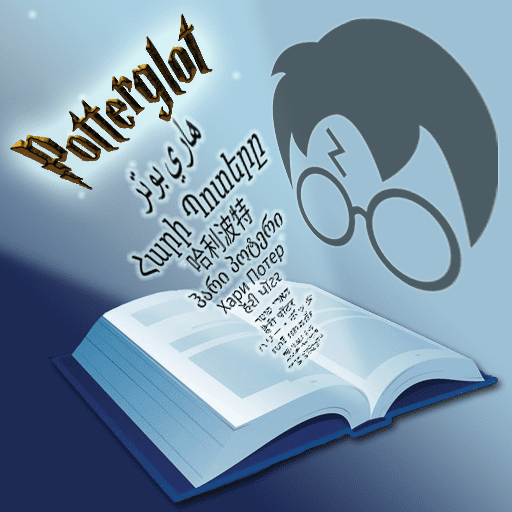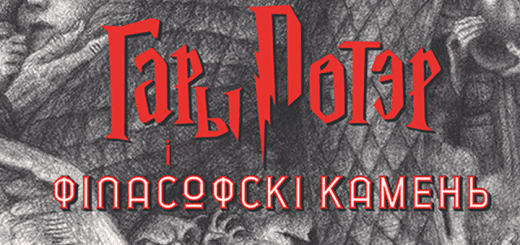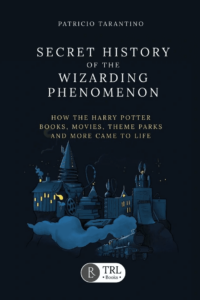 Macroeditions
Macroeditions
There is a terminological gap that causes HP translation collectors a lot of consternation. Well, it caused pedantic HP translation collectors who like to be precise and accurate a lot of consternation. Ok, it might just be me.
The fact is, that The List is not, nor has it ever been, just a list of translations—there are translations, the original books, transliterations, adaptations and other variants. Recently, ‘narrations’ have been added to the new list I’m working on. And although, in the list, the relationship is flat, the fact is that all the categories aside from ‘translation’ are derivatives of a translation (or the original)—there’s a hierarchy. I have always set my collection criteria (and many have followed suit) as “translations and other linguistically interesting variants”. We have listed them; we know what they are—the commonly accepted number stands at 981 as of this writing. But what is it a list of. “Translations and other linguistically interesting variants” is painful; most of the time we revert to “it’s a list of translations”, but that is misleading and imprecise.
For my purposes, it’s also important just in constructing the new list—a flat list just doesn’t cut it anymore and computers are nothing if intolerant to poor definitions. So, for a long time I have been using “Language Edition” as a label although never really satisfied with it. Recently, “text block” has been used quite a bit to talk about variation in the texts of two editions. I was warming up to it and went so far as to try it out as a label on the new list, but it didn’t last long. First problem is that it already has a specific meaning in publication: pages that are to be bound into the book. It’s much more concrete than we’ve been using it lately in the context of translations: the ‘block’ refers to the very specific, physical printed stack of pages. If we can avoid co-opting and abstracting related terminology, that would be ideal. But there is a bigger problem with ‘text block’—I’ve just added the category ‘narration’ to the classifications in order to capture audio-books in all their forms. They are explicitly a modality shift away from text—to call a narration a ‘text block’… well it’s just not right.
I like to ground things in the concrete, so I took a step back. What is the concrete thing that we are grouping together? Editions. Whether an audio book, ebook, translation or adaptation edition works to refer to particular publication. So let’s start with editions and abstract from there. That’s when I think the right analogy fell in place for me.
In the classification of languages, linguists often refer to “macrolanguages” to collectively refer to a group of related languages and/or dialects. Some examples non-linguists are usually familiar with: Arabic, Chinese, or Serbo-Croatian. These are good examples, because they are relevant to Harry Potter translations and also because each of these macrolanguages came about differently.
The Arabic macrolanguage unites increasingly divergent spoken dialects that are united by a common literary dialect. That is, the standard written dialect of Arabic that the entire Arabic speaking world reads and writes in, is so different from what is spoken, that it is practically taught as second language. It’s approaching a similar situation as Latin when all the romance languages diverged. The SIL which maintains ISO-639, the standard for identifying the worlds languages using three-letter codes identifies 30 Arabic dialects sufficiently distinct as to require a separate code (Arabic, the macrolanguage, is ara):
| ISO-639-3 | Language Name |
|---|---|
| aao | Algerian Saharan Arabic |
| abh | Tajiki Arabic |
| abv | Baharna Arabic |
| acm | Mesopotamian Arabic |
| acq | Ta’izzi-Adeni Arabic |
| acw | Hijazi Arabic |
| acx | Omani Arabic |
| acy | Cypriot Arabic |
| adf | Dhofari Arabic |
| aeb | Tunisian Arabic |
| aec | Saidi Arabic |
| afb | Gulf Arabic |
| ajp | South Levantine Arabic |
| apc | North Levantine Arabic |
| apd | Sudanese Arabic |
| arb | Standard Arabic |
| arq | Algerian Arabic |
| ars | Najdi Arabic |
| ary | Moroccan Arabic |
| arz | Egyptian Arabic |
| auz | Uzbeki Arabic |
| avl | Eastern Egyptian Bedawi Arabic |
| ayh | Hadrami Arabic |
| ayl | Libyan Arabic |
| ayn | Sanaani Arabic |
| ayp | North Mesopotamian Arabic |
| bbz | Babalia Creole Arabic |
| pga | Sudanese Creole Arabic |
| shu | Chadian Arabic |
| ssh | Shihhi Arabic |
Chinese on the other hand, is a similar in that they are both languages that united by written language, but it is a subtly different situation. The Chinese languages are more divergent than Arabic; largely mutually unintelligible. Where as learning literary Arabic is akin to learning a second, related language, the ideographic Chinese characters allow speakers to share a common writing system that they just learn to pronounce differently2. ISO-639 has 16 member languages for the Chinese macrolanguage (zho).
| ISO-639-3 | Language Name |
|---|---|
| cdo | Min Dong Chinese |
| cjy | Jinyu Chinese |
| cmn | Mandarin Chinese |
| cnp | Northern Ping Chinese |
| cpx | Pu-Xian Chinese |
| csp | Southern Ping Chinese |
| czh | Huizhou Chinese |
| czo | Min Zhong Chinese |
| gan | Gan Chinese |
| hak | Hakka Chinese |
| hsn | Xiang Chinese |
| lzh | Literary Chinese |
| mnp | Min Bei Chinese |
| nan | Min Nan Chinese |
| wuu | Wu Chinese |
| yue | Yue Chinese |
Incidentally, Yue Chinese is Cantonese, in case you were concerned that you didn’t see the other familiar Chinese language you might have expected to see in this list.
Serbo-Croatian (hbs) is a totally different situation. In this case, the macrolanguage exists because, by purely linguistic criteria, there is only one language. The variation in Serbo-Croatian is arguably less that you see in English in London. That said, you would be mistaken if you believed that only linguistic criteria are relevant determining what is and is not “a language”. You cannot divorce language from a population of speakers and so sociopolitical criteria are often equally relevant. And that is reflected in our HP translations! I’m sure that you are more familiar with the names in this list than you are in either of the two above:
| ISO-639-3 | Language Name |
|---|---|
| bos | Bosnian |
| cnr | Montenegrin |
| hrv | Croatian |
| srp | Serbian |
By now, it should be obvious where I’m going: macroedition is the analogous term applicable to our lexical gap. I hope that this slightly long-winded detour into macrolanguages has made it clear that there is a precedent that lends it some credibility. A macrolanguage is a set of languages that share a common characteristic—a macroedition is a set of editions that share a common characteristic: i.e. all the Spanish editions that were adapted to European Spanish; all the editions of the original vs. revised Italian translation; etc. Those macroeditions can be further classified into different types: adaptations, transliterations, narrations… translations.
There is still an unfortunate terminological overlap that remains—translation—and I don’t think it’s going anywhere. It’s going to continue to be a higher-level abstraction and a categorization of macroeditions. Hear me out.
What I’m arguing for is a hierarchical system for classifying HP books. At the simplest it is:
Translation
↓
Macroedition
↓
Edition
In this simplest case—let’s take Asturian—each of those levels is a set of one element and are essentially equivalent to each other. We are never going to call any of those anything but “translation”—they all conflate conceptually into the same thing and that is just fine.
Consider that every new translation starts this way. Regardless of the variations that crop-up over time, every translation starts like Asturian—a conceptual conflation to “translation”. As new editions appear—illustrated, 20th Anniversary, etc.—the Translation and Macroedition levels still conceptually conflate to “translation”, and that continues to be just fine.
Let’s add a hypothetical braille edition of Asturian. Suddenly, this is not the same text any more and is intended for a completely different audience. We want to capture that distinction and do so by identifying a second macroedition. This braille edition is still unambiguously an edition of the Asturian (top-level, capital-T) Translation, but it is undeniably different from what we’ve seen before—it’s a transliteration of the original. We’ve already established that first macroedition as a (mid-level, lowercase-T) “translation”—it makes sense to continue to call it that and label the new macroedition as something else.
This is more formally defined, but is fundamentally what The List has been: a list of macroeditions where the first macroedition is labeled3 a translation (or “original” in the case of the original English books) and subsequently derived macroeditions are categorized differently (Tl, A, V).
“Macroedition” isn’t pithy, it isn’t immediately comprehensible—I don’t think that I’m going to start hearing people saying that they collect “Harry Potter macroeditions” or even “Harry Potter translations and macroeditions” (I might)—but it is accurate, it doesn’t conflict with other terminology, and it satisfyingly fills (my burning) terminological need!
Notes
1 The original plus all the authorized translations, adaptations, variants, the Serbian Latin transliteration, and 1 Braille transliteration of PS.
2 OK, these claims about Arabic and Chinese are massive simplifications. The reality is more complicated—it’s always more complicated—but it’s enough for our purposes here.
3 Oh Spanish, why do you continue to cause me grief? It has been an exception to this rule—one that I will now have to fix.






